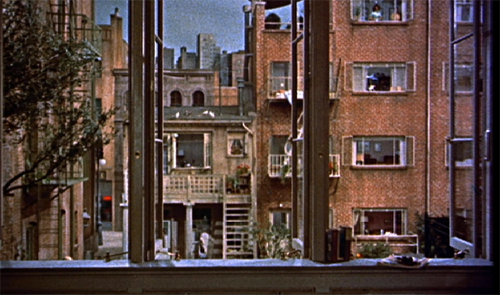Hitchcock's films use this theory of the gaze, as we can see in Rear Window. As discussed on the Mulvey site, Jeffries is given the power of looking. However, he does not have much agency within the space of the film. Hitchcock confines him to his room.

Because the camera never leaves the viewpoint/space pictured above, neither does Jeffries (until the very end when he is forced out). Jeffries may be able to view his world, but ultimately, he cannot control it, he is disconnected from it because he cannot really partake in it, thus his gaze ultimately fails.
Psycho is a film that directly relates to psychoanalysis on several levels. For one, the main character clearly experiences over identification with the mother, an idea that can be found in Freud's theories. At the end of the film, the standard pscyhiatrist gives his analysis of Norman Bates, and the psychiatrist's generally laughable nature makes me think it was thrown in for Hitchcock's amusement. Norman's gaze is also failing to control, because while he can look at Marion, he cannot touch due to his subconscious personality. In order to deal with this, he (as his mother) kills Marion. Norman does not have any power over what he sees.
How Hitchcock visually represents this is through subjective camerawork that is limited. When Norman peers through his peephole, an indication that he has done this before and often, we see him look, and we see Marion undressing, framed by what can assume to be the peephole itself (similar to what he did in Rear Window).

I am not suggesting that this viewpoint is limited, just that the amount of times he uses that technique within this film is infrequent, which places us outside of Norman's perception. If he were to place us in Norman's perspective, he would also have to give away the secret. In order to keep the suspense, we are visually separated from Norman, constantly being the viewer of his actions. The next time we experience this technique is when Norman is Mother, the killer, in the shower, but we do not know who the killer is. In this way, Mother has more visual power than Norman.